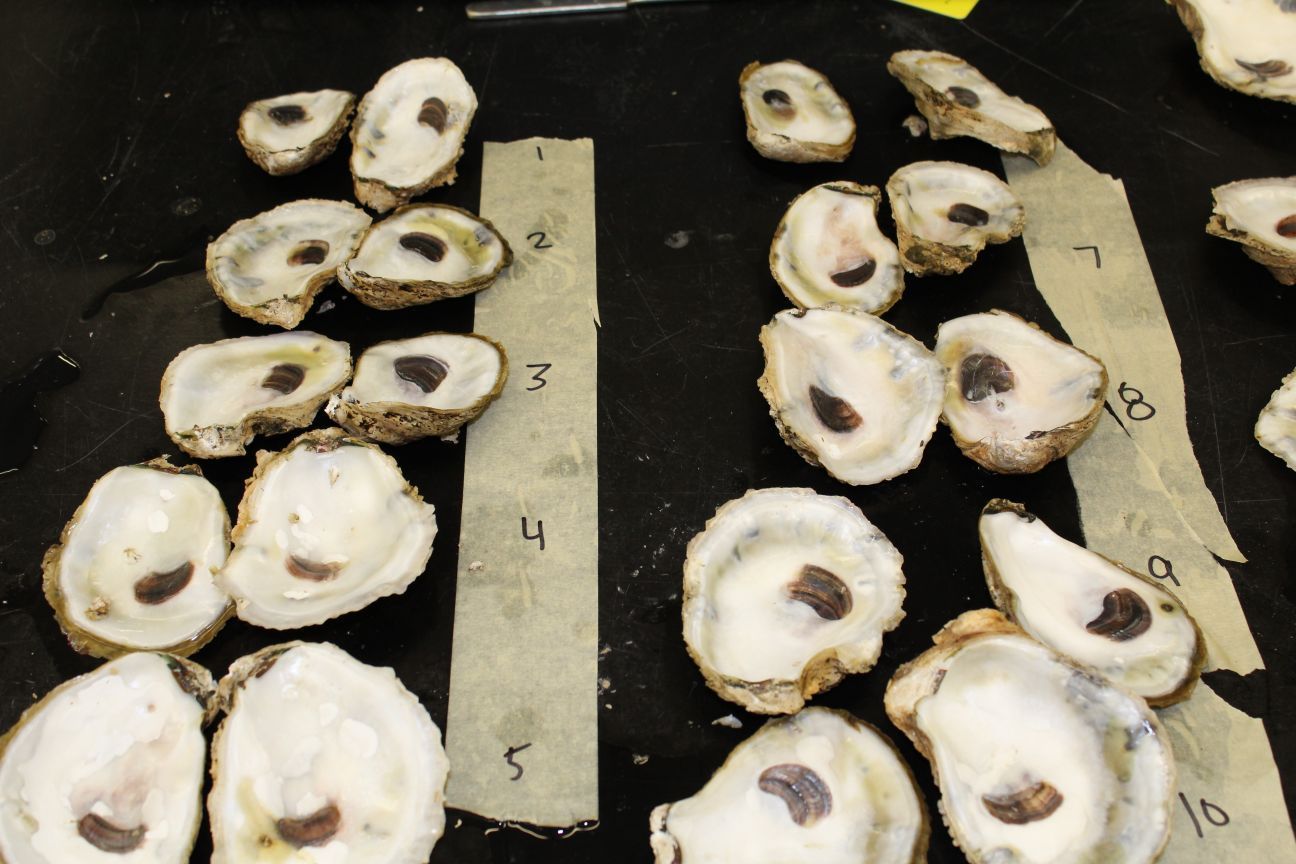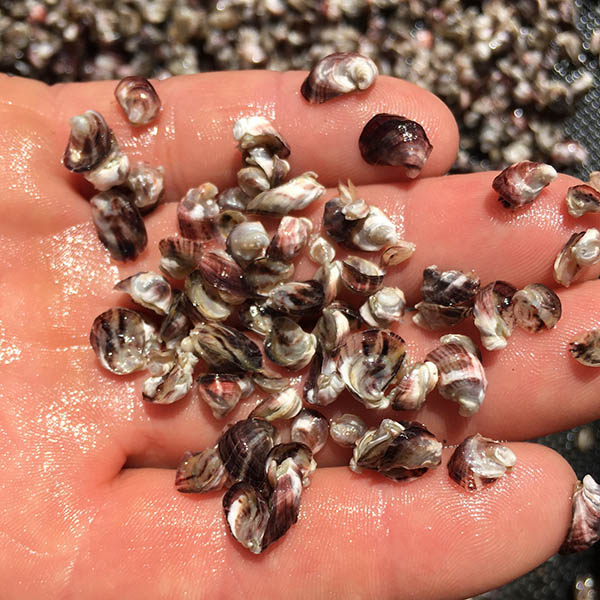
Most shells come from shucking houses, but about 15,000 bushels come from the oyster shell recovery program, which collects shells from restaurants and consumers.īefore the shells can be utilized, they must be rid of all organic matter. The hatchery goes through about 65,000 bushels of shell per year. Capital News Service photo by Sarah Polus. The Horn Point Hatchery uses about 65,000 bushels of shell annually.

A recycled shell, which next summer may become the home for a new oyster. Once the larvae have successfully attached to shells and transformed into oysters, the Oyster Recovery Partnership plants them in the bay, Meritt said.

In the hatchery, the process is artificially conducted by placing larvae in tanks, where they can settle on clean shells. “At this stage, they’re no bigger than a grain of sand,” Meritt said, explaining the complex operation. Once they set, the foot uses an adhesive to attach, which allows the larvae to avoid being eaten and transform into an adult oyster. Availability of material suitable to settle down on, good water quality and healthy larvae at the right stage are all factors that have to align for success. “Oysters get one shot to determine where they’re going to live for the rest of their lives,” Meritt said. This is a crucial period, because they only have a few days to find a habitat before they die. Once the oysters are a couple of weeks old, they get too big and swimming becomes difficult, so they grow an appendage similar to a foot and use it to look for a suitable shell. During this stage, larvae are carried by river currents, making them extremely susceptible to water quality changes. Within 12 to 24 hours, larvae develop shells and the ability to swim around rivers, a state which they remain in for two to four weeks. Only one oyster needs to spawn in order to create a successful batch, as other male oysters will release their sperm once they detect foreign sperm in the water, Meritt said. Oysters are broadcast spawners, meaning that they expel eggs into the water and fertilization occurs outside the animal’s body. Once the water warms, typically after early June in Maryland, oysters begin spawning - releasing eggs and sperm, over a period that lasts about 20 to 25 weeks. In the winter, oysters enter a dormancy-like period where they don’t feed, grow, filter or reproduce. A 20-foot-tall pile of recycled oyster shells will sit outside for about a year, before the shells are washed and reused for oyster larvae grown in the Horn Point Hatchery. The hatchery carefully simulates these environmental factors, including proper water temperature and salinity levels, in order to “trick” the oysters into producing sperm or eggs at any time during the lab’s growing season. The lab finished growing its last batch of oysters in September.Īccording to Meritt, oysters begin to reproduce at approximately 3 years old, and draw on hints from their environment to begin the process. Once the spawning process begins, it operates 24/7, until the water becomes economically unfeasible to heat.

The hatchery operates year round, but only grows new oyster spat during the summer months.

The Oyster Recovery Partnership provides and cleans the shells the hatchery uses. The lab works with the Department of Natural Resources and the Chesapeake Bay Foundation, among others. The Horn Point Hatchery is run by the University of Maryland Center for the Environment. Meritt said overharvesting, overpopulation of the watershed region, habitat destruction, disease, nutrient excess from runoff and sedimentation issues are the major problems affecting oysters’ ability to repopulate naturally.Īlthough the lab conducts environmental research, its main focus is to “bring back healthy oyster populations to the bay through outreach and production,” Meritt said. The scientist now oversees the program, and its oyster re-population strategies, with ease and excitement. Since then, he has managed to rise through the ranks in the oyster program, transitioning from his start as an intern into his current position as director. Capital News Service photo by Sarah Polus.ĭon Meritt has been working at the Eastern Shore lab since it opened in 1973. Don Meritt, director of the Horn Point Hatchery, explains how recycled oyster shells are left outside the Cambridge lab for about a year, in order to allow organic matter to decompose naturally before the shells are reused. The Horn Point Hatchery, one of the largest oyster hatcheries on the East Coast, wrapped up its most successful season yet, producing a record number of oyster larvae that have successfully set into a shell. CAMBRIDGE – One Maryland lab is using science to artificially create, feed and grow oyster larvae - no bigger than a grain of sand - in order to help restore the Chesapeake Bay.


 0 kommentar(er)
0 kommentar(er)
